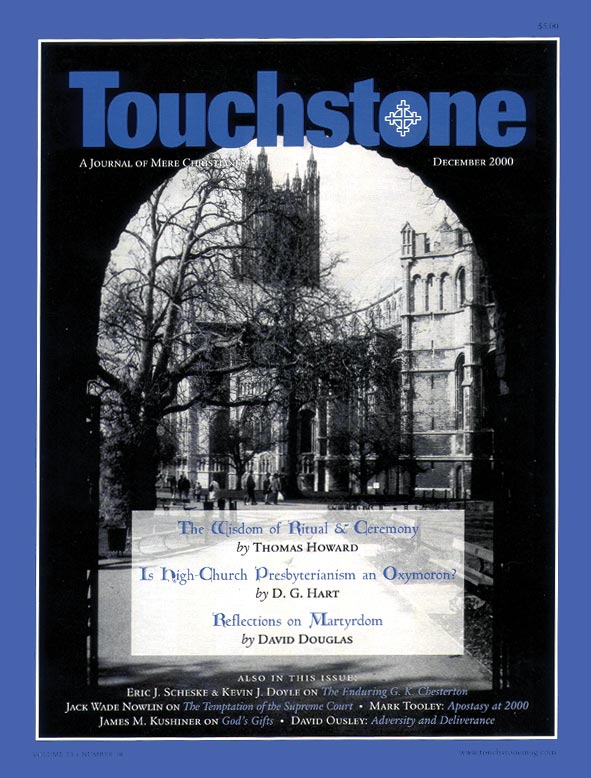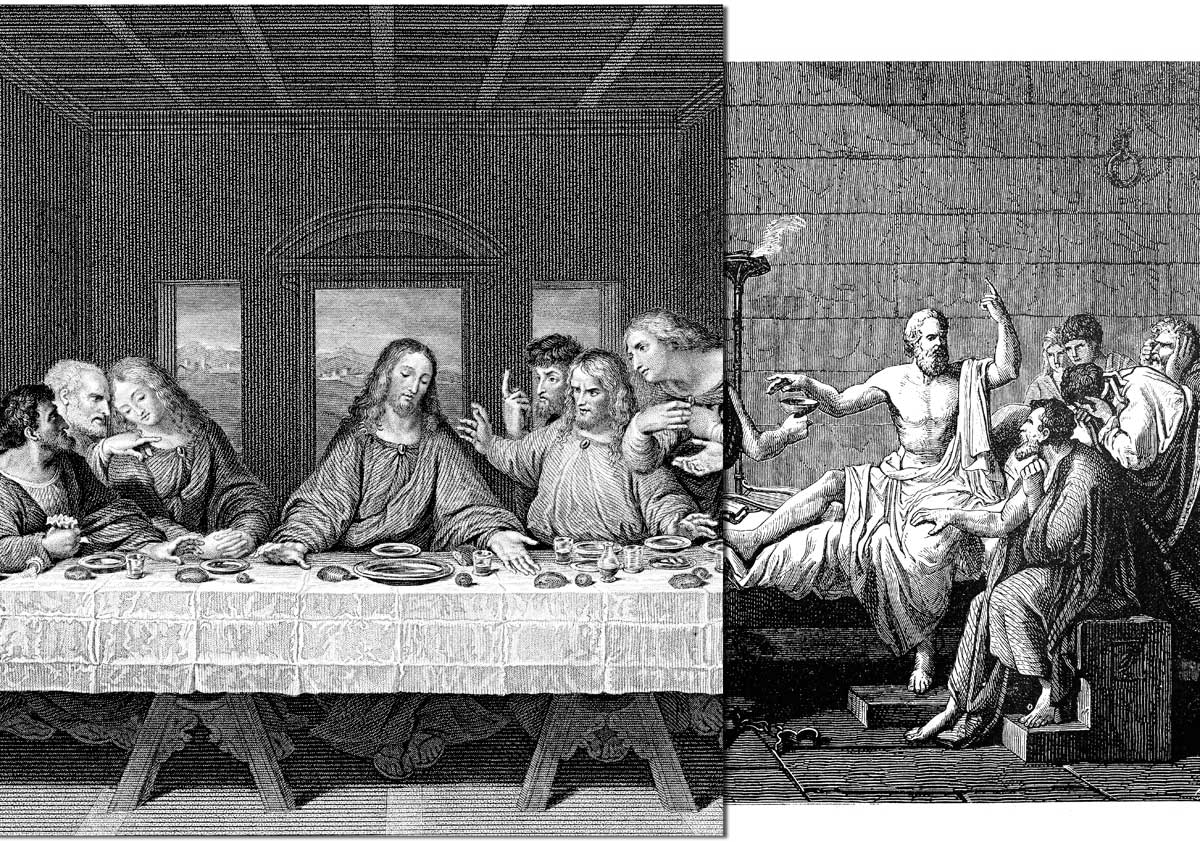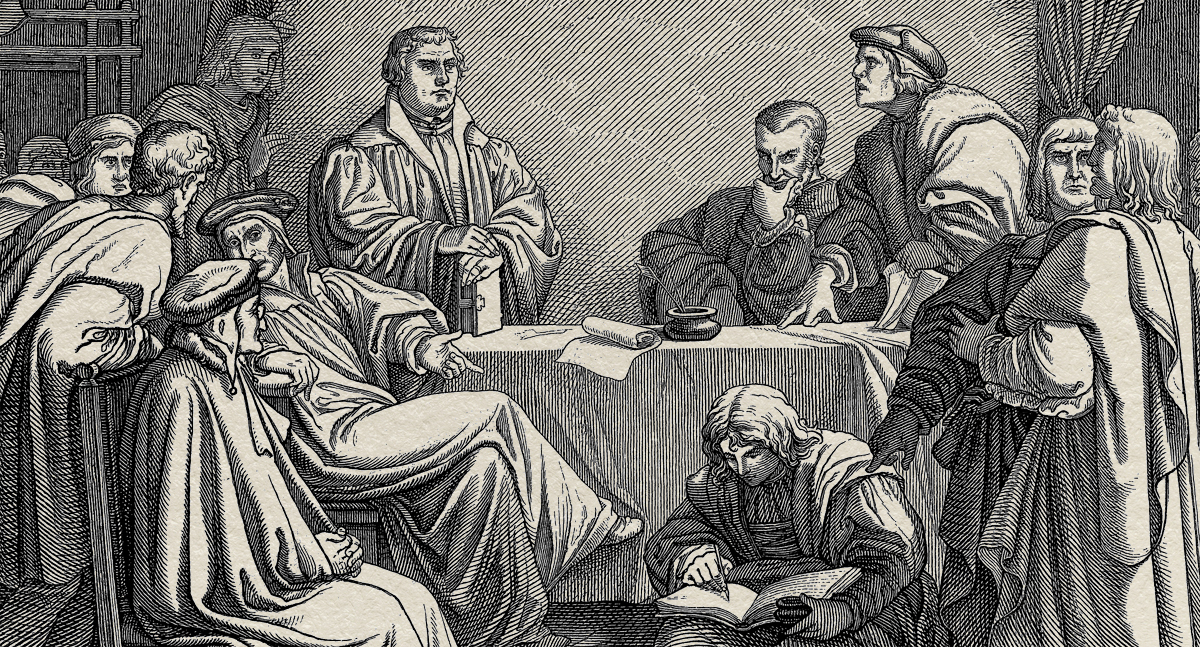Rediscovering Mother Kirk
Is High-Church Presbyterianism an Oxymoron?
by D. G. Hart
The words “high church” and “Presbyterian” are seldom found together, and for good reason. Anglo-American Presbyterians and their Reformed siblings on the European continent have not distinguished themselves for possessing either overly refined liturgical sensibilities or highly effective mechanisms for protecting the prerogatives of clergy.
Of course, for the descendants of Calvin, theology is a breeze. But on the Protestant ecclesiastical spectrum from low to high, the best Presbyterians can do is position themselves about where Congregationalists do, toward the middle, with Lutherans and Episcopalians above, and Methodists and Baptists below. This may explain the old line about Baptists being Methodists with shoes, and Presbyterians being Baptists who can read.
Still, as decent and orderly as it may be for Presbyterians to inhabit the moderate middle of Protestant notions about liturgy and the ministry of the Church, if left to their own devices they invariably descend to the nether regions of churchly sensibilities. So for Baptists on the way up, the Presbyterian option is a happy one since it rarely demands a significant adjustment beyond coming to terms with infant baptism.
My wife and I both were reared in fundamentalist Baptist congregations and now belong to the Orthodox Presbyterian Church (OPC), a largely low-church communion. Five out of our six brothers and sisters have been members of the southern equivalent of the OPC, the Presbyterian Church in America. Though anecdotal, such evidence confirms the point that Presbyterianism is not a stretch for Baptists. In fact, it may be the denominational preference for Baptists experiencing upward social mobility.
But while Presbyterianism offers a more high-brow form of Protestant Christianity for Baptists, its low-church impulses are legion to believers who desire a more sober and formal expression of devotion. We may be too far from the publication of Robert Webber’s Evangelicals on the Canterbury Trail to claim that Presbyterians in search of serious worship are becoming Episcopalians. That may have been true in the 1970s, but today Presbyterians seeking ecclesiastical upward mobility have broadened their horizons and can now be found among the Eastern Orthodox and Roman Catholics.
Rare is the Presbyterian congregation that offers such liturgically minded souls a comfortable home. Other Presbyterian seekers, trying to extract liturgical graciousness out of a tradition that appears to have none, turn to a high-brow form of blended worship. Instead of introducing praise songs and choruses into the average Presbyterian order of worship—the low-brow version—those wanting greater formality import into Presbyterian services liturgical elements from other high-church traditions.
Can Presbyterians Be High-Church?
But perhaps either turning to other traditions wholesale or supplementing Presbyterian devotion with Anglican and Orthodox forms is unnecessary. Maybe there is buried within the historical mass of low-church Presbyterianism a high-church tradition every bit as divinely appointed and liturgically well conceived as the best of the other traditions higher up the scale. If so, then low-church Presbyterianism is the real oxymoron.
Many Christians might be surprised by the high-church tendencies within the Reformed tradition, Presbyterians perhaps being the most amazed. So accustomed are Protestants in North America to remembering the anti-papist sentiments of the Reformation that they forget how many of the practices and beliefs of Christendom were perpetuated in Calvinistic and Lutheran churches, chief among them a respect for ritual, formality, and holy office. The Protestant Reformation, after all, was just that, a reformation of forms and structures, not a repudiation of ritual or legitimate ecclesiastical authority (a debatable statement, of course, to Roman Catholics).
D. G. Hart works for the Intercollegiate Studies Institute (www.isi.org) and is an elder in the Orthodox Presbyterian Church. He is the author of A Studen't Guide to Religious Studies (ISI Books) and John Williamson Nevin: High Church Calvinist (P&R Books).
bulk subscriptions
Order Touchstone subscriptions in bulk and save $10 per sub! Each subscription includes 6 issues of Touchstone plus full online access to touchstonemag.com—including archives, videos, and pdf downloads of recent issues for only $29.95 each! Great for churches or study groups.
Transactions will be processed on a secure server.
more from the online archives
calling all readers
Please Donate
"There are magazines worth reading but few worth saving . . . Touchstone is just such a magazine."
—Alice von Hildebrand
"Here we do not concede one square millimeter of territory to falsehood, folly, contemporary sentimentality, or fashion. We speak the truth, and let God be our judge. . . . Touchstone is the one committedly Christian conservative journal."
—Anthony Esolen, Touchstone senior editor











